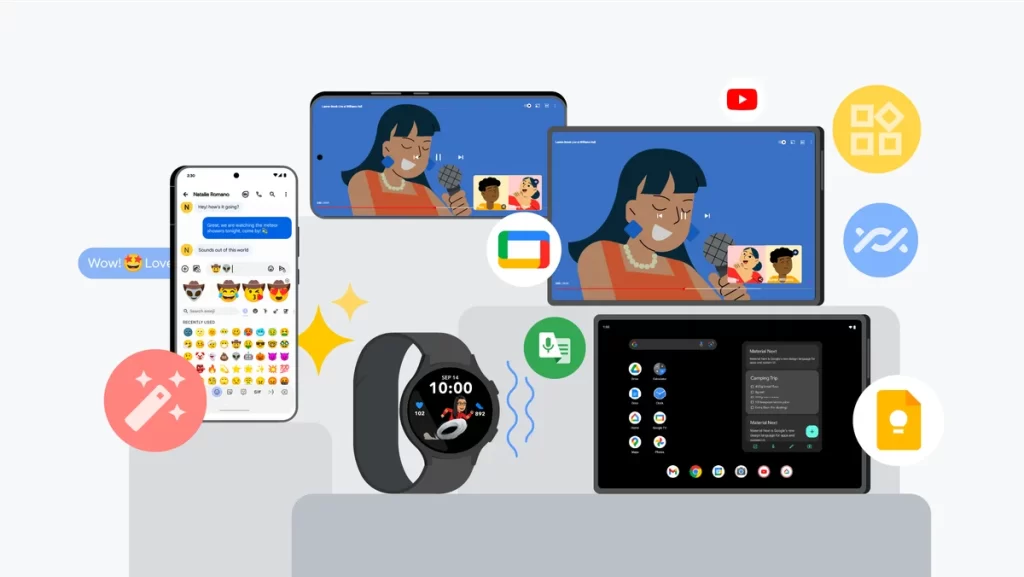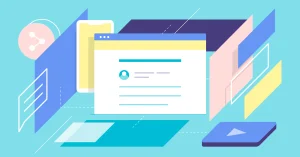Elevate Your Everyday with Essential Android Features

In the fast-paced world of modern technology, our smartphones have become indispensable tools that help us navigate through daily tasks with ease and efficiency. Among the myriad of mobile operating systems available, Android stands out for its versatility and user-friendly features. Whether you’re a seasoned tech enthusiast or a casual user, Android offers a suite of functionalities designed to enhance your everyday life. From productivity boosts to entertainment enhancements, the platform’s robust feature set ensures that users can make the most out of their devices. In this article, we will delve into six essential Android features that can significantly elevate your daily experience.
Google Assistant: Your Virtual Helper
One of the signature features of an Android phone is a very helpful virtual ‘assistant’. And I mean ‘assist’ in more than the usual casual sense of the word. Google Assistant is a superpowered helper that allows you to utilise verbal commands to make all kinds of requests: set reminders, send texts, call people, control connected devices – even turning on the lights, unlocking your doors or marshalling your bedroom to a pleasingly cool temperature – all without having to lift your finger. Assistant is even integrated with other Google services, notably Calendar and Maps, so that everything is always working in perfect synchronicity to ensure you never miss a thing. Above all, the helper can understand natural language, which means it is ridiculously easy to use for all ages.
In addition to completing basic requests, Google Assistant has a host of powerful features that help increase productivity and ease. You can have the assistant read and respond to incoming messages, translate conversations in real time, and even search the web to retrieve information quickly. You can customise your assistant to respond in the way that suits you and to perform the tasks that you want. Google Assistant works wherever you are, whether you’re at home, in your office, or on the road.
Digital Wellbeing: Balance and Productivity
As we spend more and more time looking at screens, Android’s suite of Digital Wellbeing tools serve to rebalance productivity and relaxation. Digital Wellbeing’s most useful features examine your phone-use habits to equip you with knowledge on how to spend screen time mindfully. Insights tools show daily breakdowns of your activity inside apps, the number of notifications you receive, and how many times you pick up your phone each day. The feature empowers users to examine their data and alter bad habits by showing where they should cut back on their phone use. Focus Mode prevents selected apps from sending notifications at scheduled times, and Bedtime Mode filters notifications.
There’s Focus Mode, which you can use to temporarily mute distracting apps with a single gesture to ‘pause’ them and keep you focused on work or studies. There’s Bedtime Mode, which the phone can seamlessly shift into when it registers you getting into bed, dimming the display so it floods into your field of vision while you read. It can also mute notifications and even shift the screen to grayscale to help you wind down. Then there’s the regular activity reports, the various opportunities that Digital Wellbeing gives its users to be more mindful about their device use when, theoretically, they are in a position to do something about it – when they can redraw their working relationship with their smartphone in healthier, more collective, less outsized ways. If on Bad Day you became an island of ‘me’, digipath lets you start trying to become an archipelago again Through its tools of moderation and mindfulness, digipath can promote a healthier work or study environment. At its best, it creates a more productive and relaxed day-to-day experience for its users.
Enhanced Privacy and Security Features
Privacy and security are a priority in the modern age, and the measures Android has taken to protect its users are among the most robust out there. Android protects your data in three main ways: through regular system updates, Google Play Protect, and comprehensive permission controls that let you deny apps access to sensitive information. Google Play Protect continually scans apps in the Play Store and on your device to prevent you from downloading malicious apps. Play Protect also checks apps you’ve installed or updated for harmful behaviour or preinstalled without your permission. Your data stays safe by scanning for malware, abusive behaviour, network perils, and malicious advertising. Android’s security updates come out every six weeks or more to patch newly discovered vulnerabilities.
Privacy forms another important pillar of Android’s security. Starting with Android 11 and newer, users are granted far more granular control over app permissions, such as the ability to only allow one-time access to private data like their location, microphone and camera. Any app that wants to access sensitive data on one occasion need not have knowledge of it the next time they’re run, protecting users from apps that throw suspicious-looking requests. Scoped Storage and Private Compute Core are other mechanisms that isolate user data from easy access by other apps to protect it from being leaked. All these features make Android a good guest Bent on protecting one’s personal information, Android has developed several new security and privacy mechanisms, offering users more choices and control over their devices than ever before.
Customizable Home Screen and Widgets
One of the hallmarks of Android that I find the most appealing is how the user can modify the home screen and its widgets to make your phone, or tablet, fit how you wish to use it. Most mobile operating system’s standardised their home screens, making it impossible to really personalise your device. Android sets itself apart in this, by allowing you to decorate your OS colour scheme, alter icons and wallpapers, you can even went a step further by using live art that swirls and bubbles along with your finger motion. The phone is like your living room coffee table. You can organize the apps anyone can wish, place widgets that can provide you immediate access without leaving the home screen if desired. It’s akin to putting business cards on the coffee table so I know where to sit without asking, it’s the same for your phone — widgets can be any you want: weather, calendars, maps, email and so many more.
Widgets can be large or small, contain a variety of information including weather, calendar events, music controls, or fitness tracking, and can be resized and placed anywhere on your home screen. Want a bigger weather widget on your home screen? No problem! Want to put a calendar widget at the top right? Easy! This flexibility is just one facet of the ‘organise as you like it’ approach seen throughout Android. Making your device more pleasant and also more efficient by adding quick and easy access to things you use most What could be better than organising your home screen just the way you want it?
Seamless Multitasking with Split Screen and Picture-in-Picture
The way Android’s multitasking is implemented is that it allows you to be productively and adequately productive. It hands you the opportunity to run multiple tasks at the same instant. This thereby consists of Split screen. Split screen lets you run two apps simultaneously, allowing you to take reference information or perform actions at the same period. For instance, Open your web browser while working on your note file. Imagine watching a video on YouTube at the same instance while chatting with your friends, this is beyond possibility. Android’s split-screen Mode is a catapult for professionals, freelancers, as well as students who wants to be equally productive and give not one inch of their time, rather a double portion.
Picture-in-Picture (PiP) mode is another of the many powerful multitasking features that improves your experience in important ways. In Picture-in-Picture, you can shrink a video or a call into a small web window that floats on top of your other apps so you can continue using them as you deal with other aspects of your work. With PiP, you can watch important content and deal with it as you see fit, without ever missing anything vital, like a list of your pending emails or a calendar notification. None of these time-saving features diminish the quality of the app that you’re using because they were carefully and thoughtfully integrated with it by innovative and inventive technologists.
Advanced Camera and Photo Editing Features
The method most recent users rely on to make a decision about a new smartphone is to seek online reviews so that they can keep updated with the latest models and features. For most of these people, one of the most important features for a smartphone is the camera, and the Android operating system is best at providing effective phone camera and photo editing apps. This is because all current Android models are featured with powerful cameras that come with options like HDR (High Dynamic Range), night mode, and portrait mode. This allows users to shoot quality pictures even in low-light conditions. Furthermore, the phone’s camera app is easy to use, and its interface offers users the choice between selecting different modes and tools such as flash light, face detection, front camera, rear camera, and video recording. All these combine to enable you to take amazing pictures and videos without digging deep to get the most out of your device.
Android also includes robust editing tools to improve the final result from your smartphone camera. You can enhance your images directly on your device with the help of apps such as Google Photos, which offers a set of editing tools to easily make your photos look their best. These include filters, manual cropping, and general photo corrections such as enhancements to brightness, contrast and colour. You can also use advanced tools with artificial intelligence (AI) at the core, such as automatic enhancements and automatic creations (collages and animated GIFs). These tools, and a wide selection of third-party apps, allow you to modify your images and then share them with friends and family. All in all, they make your refined photos appear attractive when published on your social channels.
In conclusion, Android’s extensive feature set is designed to elevate your everyday life by enhancing productivity, security, customization, and entertainment. Whether you’re leveraging the power of Google Assistant, managing your digital habits with Digital Wellbeing, or capturing stunning photos with advanced camera features, Android provides the tools you need to navigate and enjoy your daily activities. By embracing these functionalities, you can make the most of your Android device, ensuring that it serves as a valuable companion in your personal and professional life. Explore these features and discover how Android can enhance your everyday experiences.







